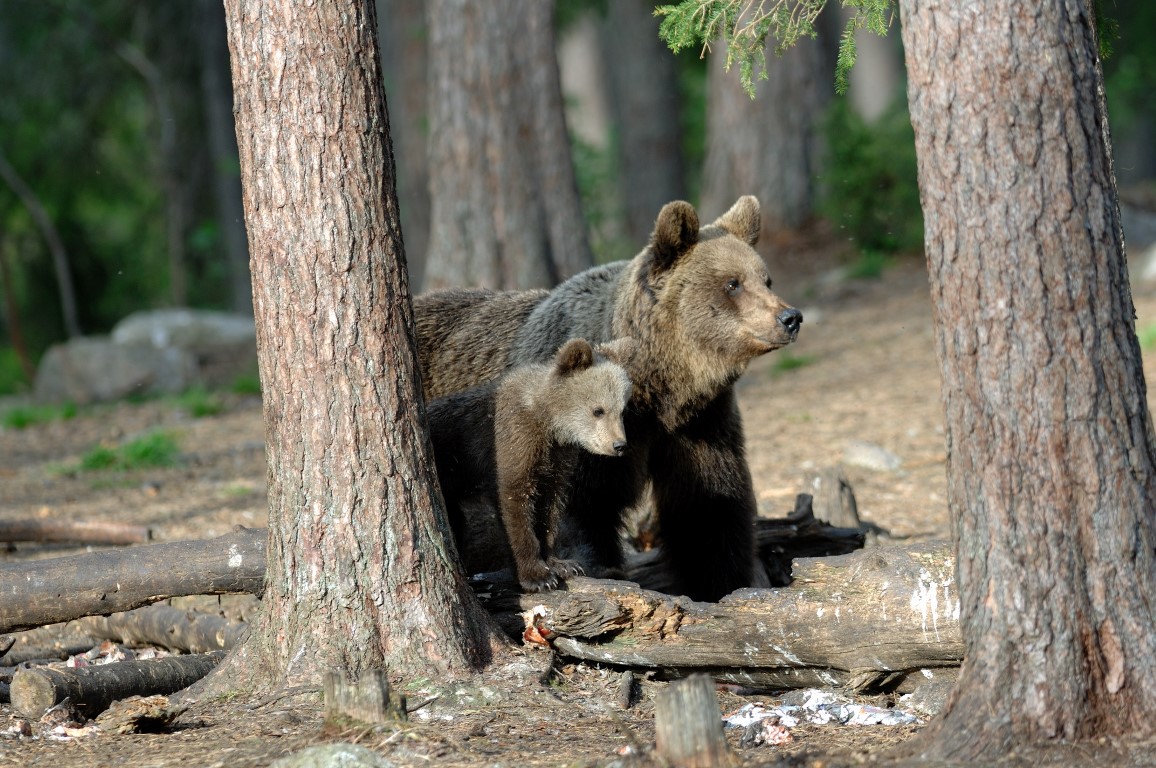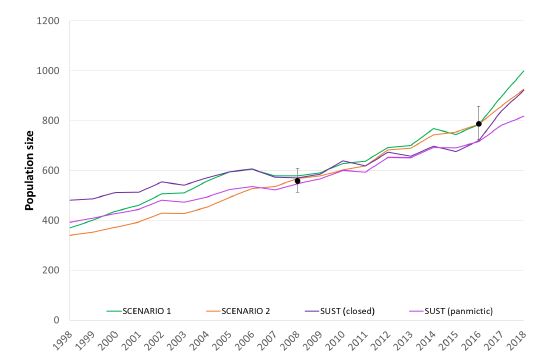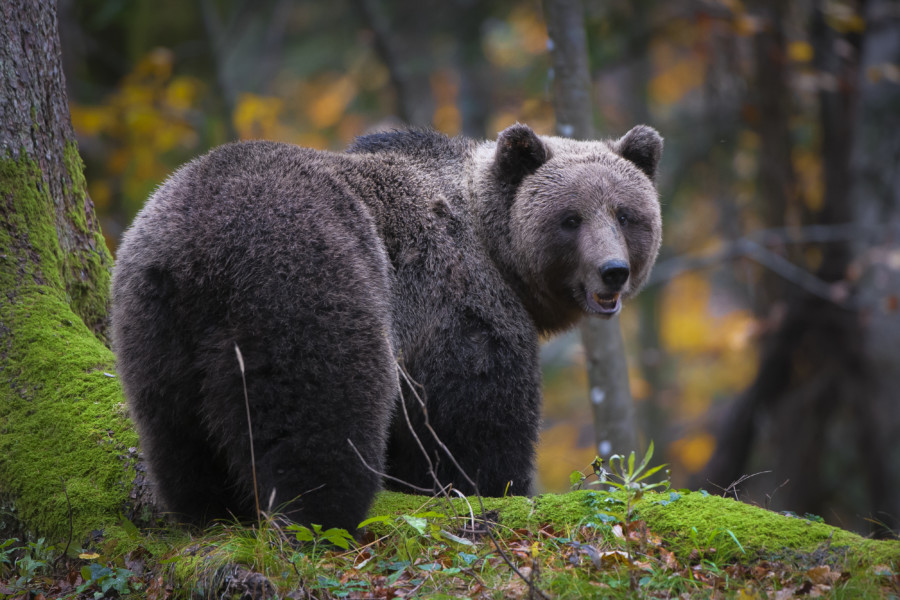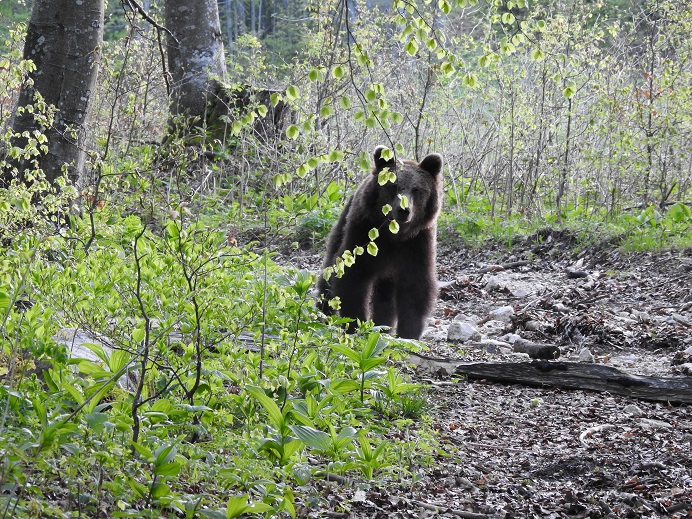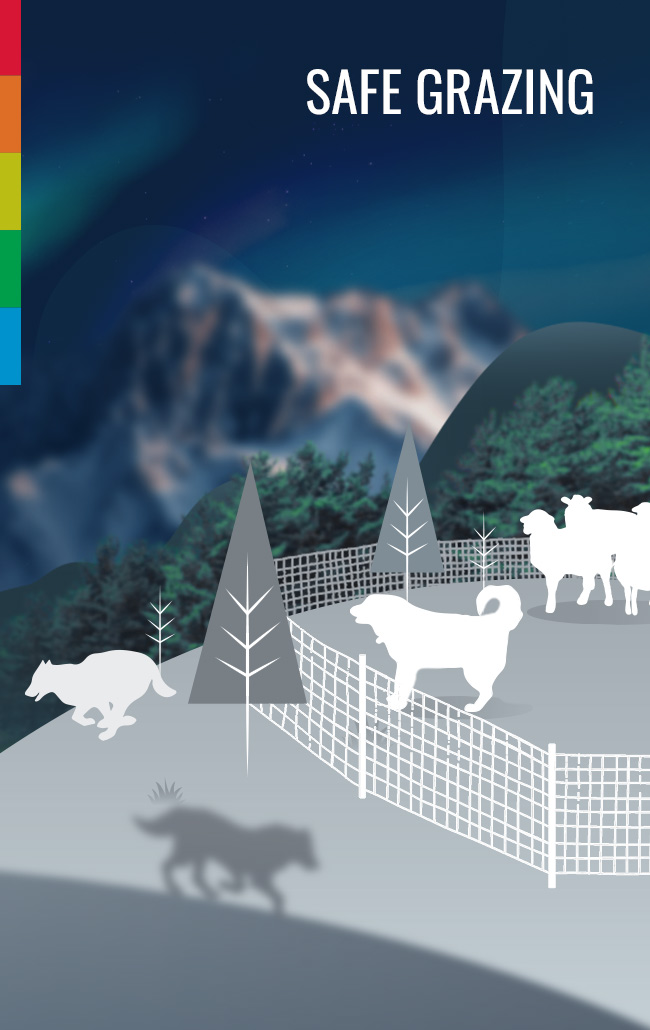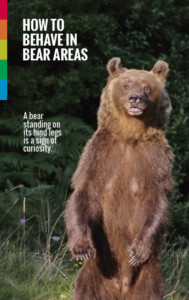Molecular genetics has been the primary method used to estimate bear abundance in the past 10 years. However, due to the financial and logistic limitations, these estimates are impossible to obtain on a yearly basis. Furthermore, the complexity of the analysis delays the process of obtaining the results, which means that the reported estimates can already be outdated. To tackle this issue, we developed some conceptually different methods of population reconstruction in the framework of the LIFE DINALP BEAR project. We used reliable data on bear abundance from the years of non-invasive genetic sampling, and combined it with yearly harvest data.
The results of different methods of population reconstruction matched well which indicated their reliability. The results show that the abundance of the bear population in the Dinarics during the past 20 years has increased most of the time. The average annual nett bear population growth in Slovenia was 4.5% and in Croatia 5.0%. Estimated bear population before the annual harvest in springs 1998 and 2018 was 405 (330-460) and 975 (875-1130) bears respectively, which indicates a 2.5-fold increase of the population size in a 20-year time period. It is important to note that until now, the annual estimates for bear population size were reported for the late autumn period, when the bear abundance is lowest. In this report, we provide the estimates for spring, when the bear abundance is highest due to reproduction. The “autumn estimates” can be 24% lower from the “spring estimates” due to the high relative reproduction rate of Slovenian bears.
The population dynamics modelling approach we have developed is rational and provides much important information for management and research. Besides the dynamics in population abundance, we could estimate also the sex and age structure of the population, its relative reproduction and the natural (i.e. not detected) mortality rate. We plan to use this approach in forecasting the changes in population abundance at different future scenarios considering brown bear management in both countries.





